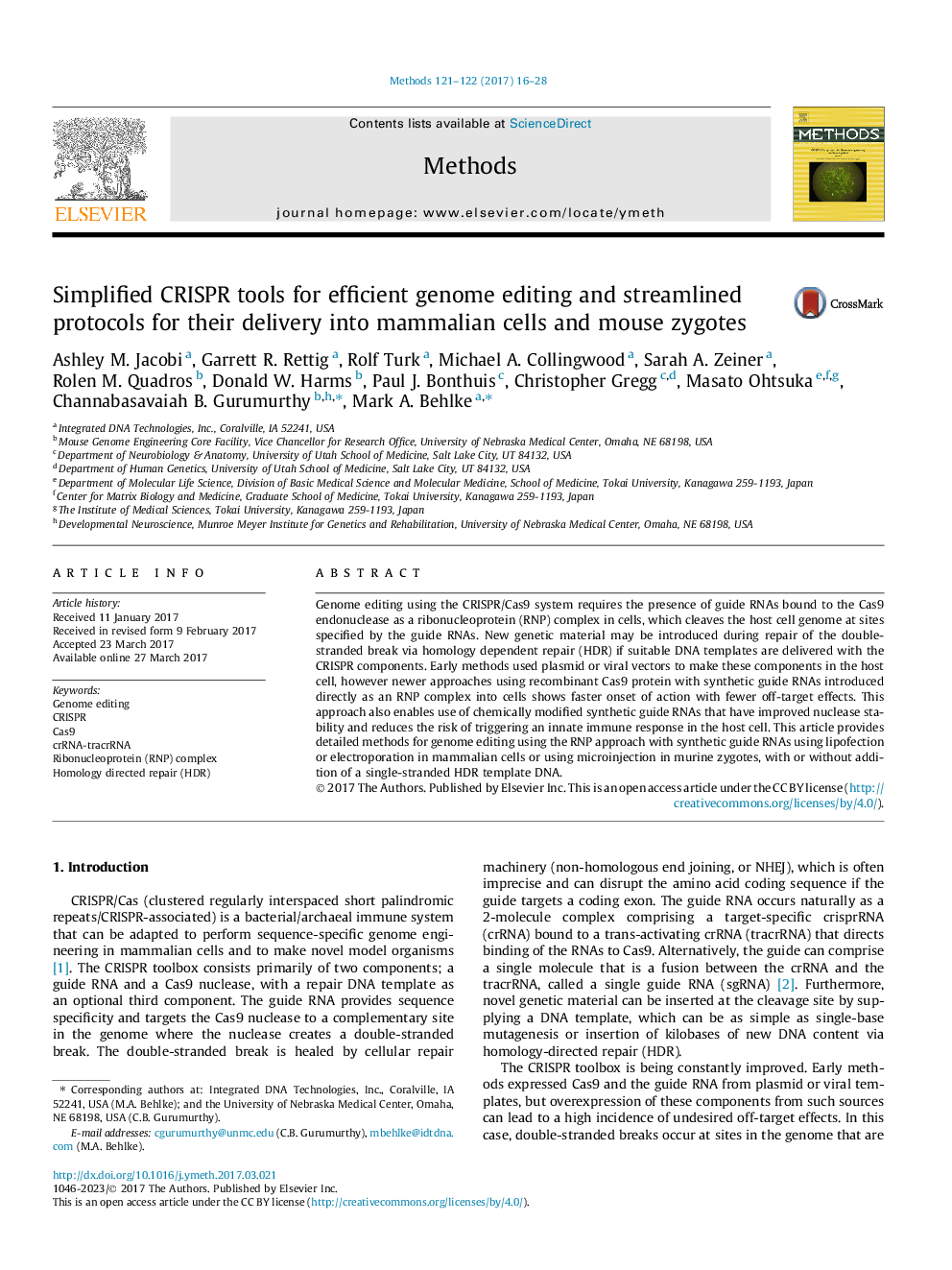| Article ID | Journal | Published Year | Pages | File Type |
|---|---|---|---|---|
| 5513595 | Methods | 2017 | 13 Pages |
â¢Efficient genome editing using crRNA, tracrRNA and Cas9 ribonucleoproteins (ctRNPs).â¢Delivery of CRISPR ctRNPs into mammalian cells via lipofection and electroporation.â¢Delivery of CRISPR ctRNPs into mouse zygotes via microinjection.â¢Efficient HDR using CRISPR RNPs and with ssODNs or in vitro synthesized long ssDNAs.
Genome editing using the CRISPR/Cas9 system requires the presence of guide RNAs bound to the Cas9 endonuclease as a ribonucleoprotein (RNP) complex in cells, which cleaves the host cell genome at sites specified by the guide RNAs. New genetic material may be introduced during repair of the double-stranded break via homology dependent repair (HDR) if suitable DNA templates are delivered with the CRISPR components. Early methods used plasmid or viral vectors to make these components in the host cell, however newer approaches using recombinant Cas9 protein with synthetic guide RNAs introduced directly as an RNP complex into cells shows faster onset of action with fewer off-target effects. This approach also enables use of chemically modified synthetic guide RNAs that have improved nuclease stability and reduces the risk of triggering an innate immune response in the host cell. This article provides detailed methods for genome editing using the RNP approach with synthetic guide RNAs using lipofection or electroporation in mammalian cells or using microinjection in murine zygotes, with or without addition of a single-stranded HDR template DNA.
Graphical abstractDownload high-res image (228KB)Download full-size image
